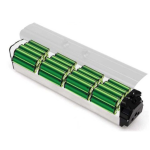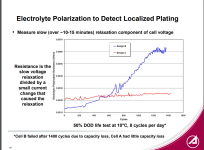adamsavage79
100 W
I've noticed that lately the bike has been acting quite strange. I find despite the motor using 1/2 the power it was normally using, I'm not getting the same range as I was when I was pushing the motor harder. I do the exact same route to and from work, and I have only 2 - 3 stop and go at the most. Going to work I was typically pulling 1200-1300 watts, and coming back I was using 500-700 watts while riding.
I find the battery is going down 1 bar to 50v roughly 2km sooner than it was before hand, and I'm using about 500-700 watts now going to and coming back from work, going the same route. The only difference is the outside temp is cooler now. So I'm using less power, and yet I'm still getting less range.
My question is, would the cooler temps be playing a role in this ? I've always assumed you would need below freezing temps for any noticable change in range to happen. It has been any where from 4 degree's celsius to 15-16 celsius.
Here are the specs of the bike and the battery.
https://www.teslica.com/purity-mountain-ebike-m1h.html#proTabPanelSpecs
I find the battery is going down 1 bar to 50v roughly 2km sooner than it was before hand, and I'm using about 500-700 watts now going to and coming back from work, going the same route. The only difference is the outside temp is cooler now. So I'm using less power, and yet I'm still getting less range.
My question is, would the cooler temps be playing a role in this ? I've always assumed you would need below freezing temps for any noticable change in range to happen. It has been any where from 4 degree's celsius to 15-16 celsius.
Here are the specs of the bike and the battery.
https://www.teslica.com/purity-mountain-ebike-m1h.html#proTabPanelSpecs




